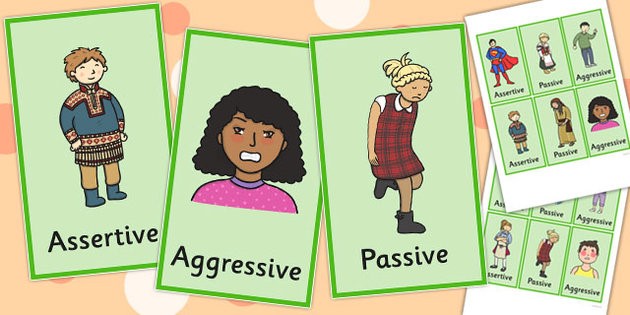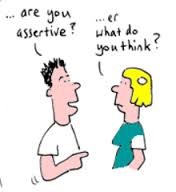|
|
‘No’ is perhaps the shortest most powerful word. Sometimes we are caught up in uncomfortable situations because it is difficult to say “No” to people at home, at work and in our daily lives. We may find it difficult to reject requests, offers, invitations or to say something that is not liked without feeling guilty as the following situations:
|
Situation 1
Wardah, a clerk who is very well liked by her colleagues. She often helps them with various tasks although they were not her job. This stresses her because she has to work overtime most days since she is unable to complete her own job.
Situation 2
Ainol worries that if he refuses Karim’s request to borrow money, their friendship will be affected.
There are various reasons why it is difficult to say “no” without feeling guilty for displeasing others. Among them, we might feel bound by duty, culture, background or fear of hurting the feelings of others. Saying ‘No’ wrongly, can also destroy relationships by alienating and angering people. That’s why saying No the right way is crucial. The secret to say no to such situations is to be assertive as described belows:
1. Self-Assertiveness
Assertive is the ability to express positive or negative thoughts and feelings clearly and honestly. We are assertive if we were able to say “no”, able to ask for help and able to express our rights, thoughts, feelings, and beliefs respectfully and do not harm or interfere with the rights of others.
Assertive individuals can make a decision firmly without being influenced by others. Thus, individuals who are assertive in life no matter at work or at home will have a high level of life satisfaction. For example, if an employee is practicing assertive behavior at work he will be more interested and enthusiastic at work. Self-assertiveness makes you happy with yourself and people will respect you.
2. Knowing Yourself
Do you know your level of assertiveness? Please answer Yes / No to these statements:
| • You dare to say ‘No’ to the things you do not like • You will ask someone If you do not understand something • You think you are beautiful and worthy • You will voice out if someone were cutting your line or your turn • You can ask for help without embarrassment. • You can refuse without guilt if a friend asked you to help him do things that are contrary to your principles. • You can express your opinion even though they differ or contradictory to opinions of others. • You can accept criticism and rejection of people • If you disagree with someone, you will talk to that person honestly. • You dare defend your rights if you are bullied or manipulated. |
Source: Google |
If your answer is ‘Yes’ to all or more than half of the above, means you have already started practicing assertiveness skills in your daily life. If the answer is mostly ‘No’, let’s learn assertive skills together.
3. Characteristics of an Assertive Individual
Assertive individuals have the following characteristics:
• Firm and honest
• Ability to differentiate positive and negative effects of an action against him and others,
• Not susceptible to external influences
• Have self-dignity and self-confidence
• Rational and mature
• Dare to say no to negative invitations and actions.
4. Tips to Say ‘No’ Assertively
Assertiveness does not exist naturally in a person. It is a skill that can be learned and practiced. It sounds simple, but to say “no” without guilt was not easy especially to those very close to us. However, saying “no” is still better than spending time and energy by something we do not like. Here are tips for saying no assertively:
- Believe that you are responsible for yourself. Take responsibility for saying “no”. Do not ask others to do it for you.
- Identify the rights, needs, requirements and how you felt.
- Ask for more time. You can say “I’ll tell you later” if you are not sure, and ask or look for more information before making a decision.
- Believe you have the right to say ‘no’ if you do not like that situation.
- Make sure the recipient know that you understand his/ her request
- Start your response with a clear ‘No’. Example: “No, I don’t smoke” or “I’m sorry I do not smoke”, if friends ask you to smoke or offer you a cigarette.
- No need to justify or give excuses. Make sure to give a clear answer so as not to create ambiguity
- Avoid using ‘you’ because it may sound like the receiver is being blamed or accused. Statement such as “You make me angry” will make the recipient feel “defensive”. Use the word ‘I’ such as “I feel angry when you say that. I hope you will not say that again.”
- Usually in solving conflict, assertive individual practice the attitude of give and take. For example, “I believe that… what about you?”, “I prefer it this way ….” or “Let’s think together to solve this problem?”
- Examples of statement to say “no” firmly:
– “Thanks for inviting me, but I am unable to attend”
– “I’m sorry I will not join you at the Cyber Cafe.” - Remember that you say ‘no’ to a request, not reject or exclude someone.
5. The difference between aggressive, assertive and passive.
 Source: Google |
Passive, assertive and aggressive are the usual responses when faced with a situation that is uncomfortable or unwelcomed. The following table shows the differences between these three behaviors : |
| Passive | Assertive | Aggressive | |
| Features | *Tend to allow others or circumstances determine the decision or outcome. *Suppress own feelings and do not dare to express them. *Rarely exercise rights or speak their mind, even if the situation warranted | *Express thoughts and feelings, without hurting others’ self-esteem. *Assertive is a balanced attitude between passivity and aggressiveness. *Assertive individuals are usually confident and respectful. |
*Express thoughts and feelings in a way that injures or assaults others’ dignity without regard of its impact on the others. *Often offend and violate the rights and emotions of others. *Easily get upset or angry. *Often feel insecure and belittle the others’ abilities. |
| Examples |
“Mmm if you want it so …. mmm I will follow ..it’s okay.” “Sorry,sorry..I’ll do it” |
“I like it when you complimented me” “I feel sad when you scolded. I hope we can discuss it positively” |
“You are so slow….it’s not that difficult” “You’re stupid.. how many times do I have to tell you” |
| Verbal Communication | *Often apologetic *Overly soft or tentative voice |
*Use ‘I’ statements *Firm and clear voice |
*Use ‘You’ statements *Loud / high-pitched/ screaming voice |
| Non-verbal Communication | *often look down or away *excessive head –nodding, not relax/ anxious *Closed/stooped posture |
*Good eye contact *Relaxed posture and movements. |
*Staring, narrow eyes *tense, clenched fist, pointing fingers. *rigid posture, trembling |
| Implication to self and others |
‘I’m not OK, You’re OK’ *My feelings are not important |
‘I’m OK, You’re OK’ *Both our feelings are important |
‘I’m OK, You’re not OK’ *My feelings are important than yours |
| Rights | Prioritise others’ rights, Neglect own right |
Prioritise own right Respect others’ rights |
Prioritise own right Neglect rights of others |
| Win/ Lose | I Lose, You Win | I Win, You Win | I Win, You Lose |
6. The benefit of Saying “No” Assertively
|
Saying ‘No’ assertively can help:
|
 |
In today’s era of limitless choices and borderless world, the presence of negative social influences such as drugs, pornography and gambling are vast. Thus, we need to be smart and brave to say ‘No’ assertively to protect ourselves from stress of overworking and negative social challenges. Enhance our lives by saying ‘Yes’ to our own needs, values, and priorities. Say ‘No” wisely to protect ourselves and to stand up for everything and everyone that matters to us.
References
- Maimunah Osman. (2000). Komunikasi Berkesan: Hubungan Interpersonal. Kuala Lumpur: Institut Tadbiran Awam Negara (INTAN).
- Noraini Ahmad. (2001). Asertif dan Komunikasi. Cheras, Kuala Lumpur: Utusan Publications & Distributors Sdn Bhd.
- Rohana Hamzah & Fadillah Ismail.(2008). Asertif. Retrieved fromhttp://www.penerbit.utm.my/bookchapterdoc/FPPSM/bookchapter_fppsm14.pdf
- Ury, William. (2007). The Power of a Positive No: Save The Deal Save The Relationship and Still Say No. New York: Bantam Dell.
| Last Reviewed | : | 4 June 2016 |
| Writer | : | Aina Mazwin binti Mohamed Radzi |
| Translator | : | Aina Mazwin binti Mohamed Radzi |
| Accreditor | : | Ruhana binti Mahmod |


 Source: Google
Source: Google





